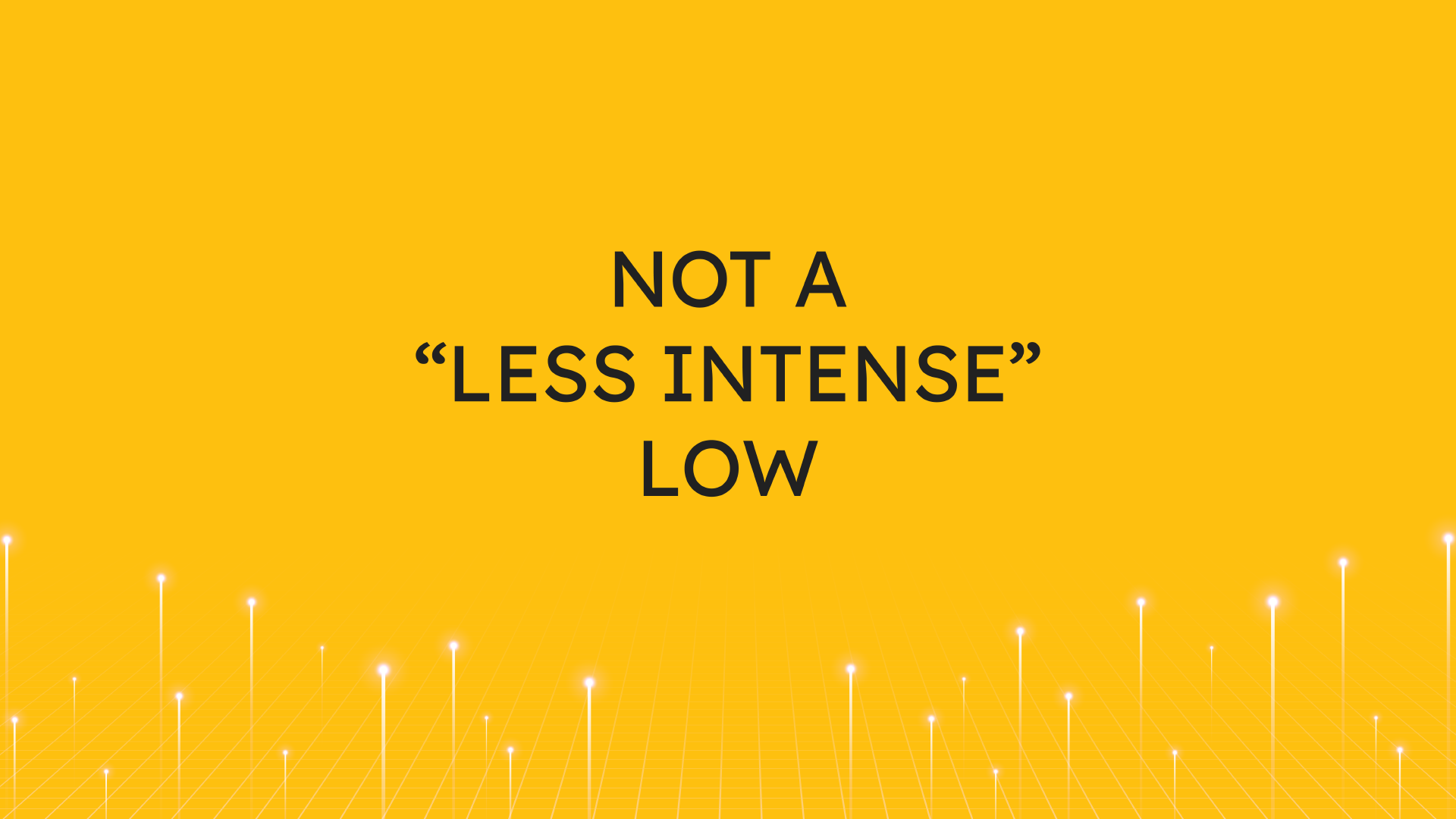
Take-Aways:
As the S&P 500 tests the levels that were seen in June, we note that many of the breadth metrics that we track fell to the same levels that were reached at that time. Equity bulls were hoping for these metrics to register higher readings when the June lows were tested, but that is different from how it has played out. This lack of a “less intense” low increases the odds that the S&P 500 has not registered its low for the cycle. A sustained move above 3,900 for the S&P 500 would negate this view.
NYSE Breadth
The NYSE Advance/Decline Line has made a new low for the cycle and remains well below the declining 50-day moving average. As the S&P 500 tests the June lows below its 50-day moving average, equity bulls were hoping for the A/D Line would make a higher low. That was not the case.
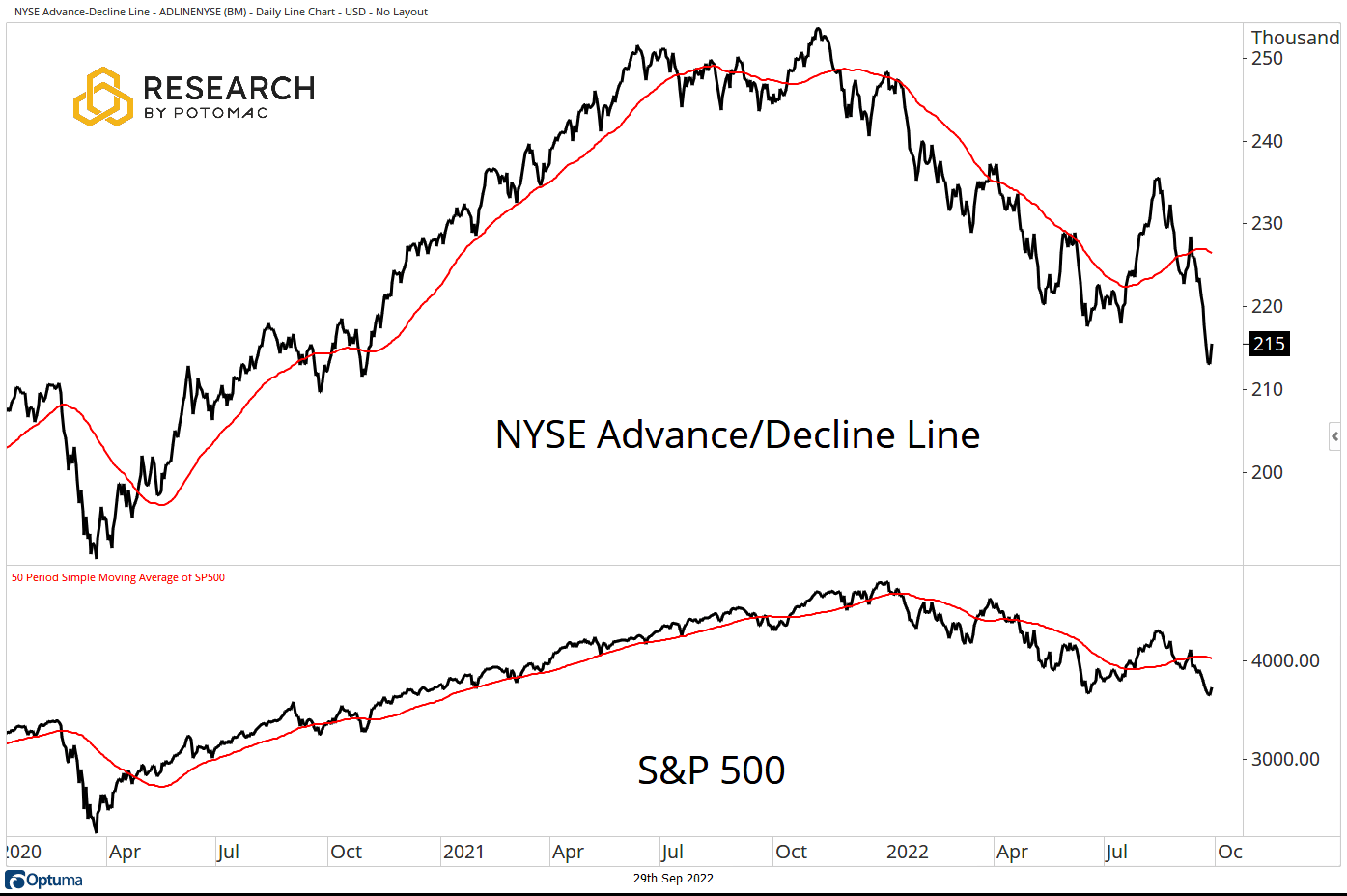
The five-day moving averages of issues on the NYSE making new 52-week and six-month lows continued higher over the past week, exceeding the levels that were seen when the S&P 500 made a low in June.
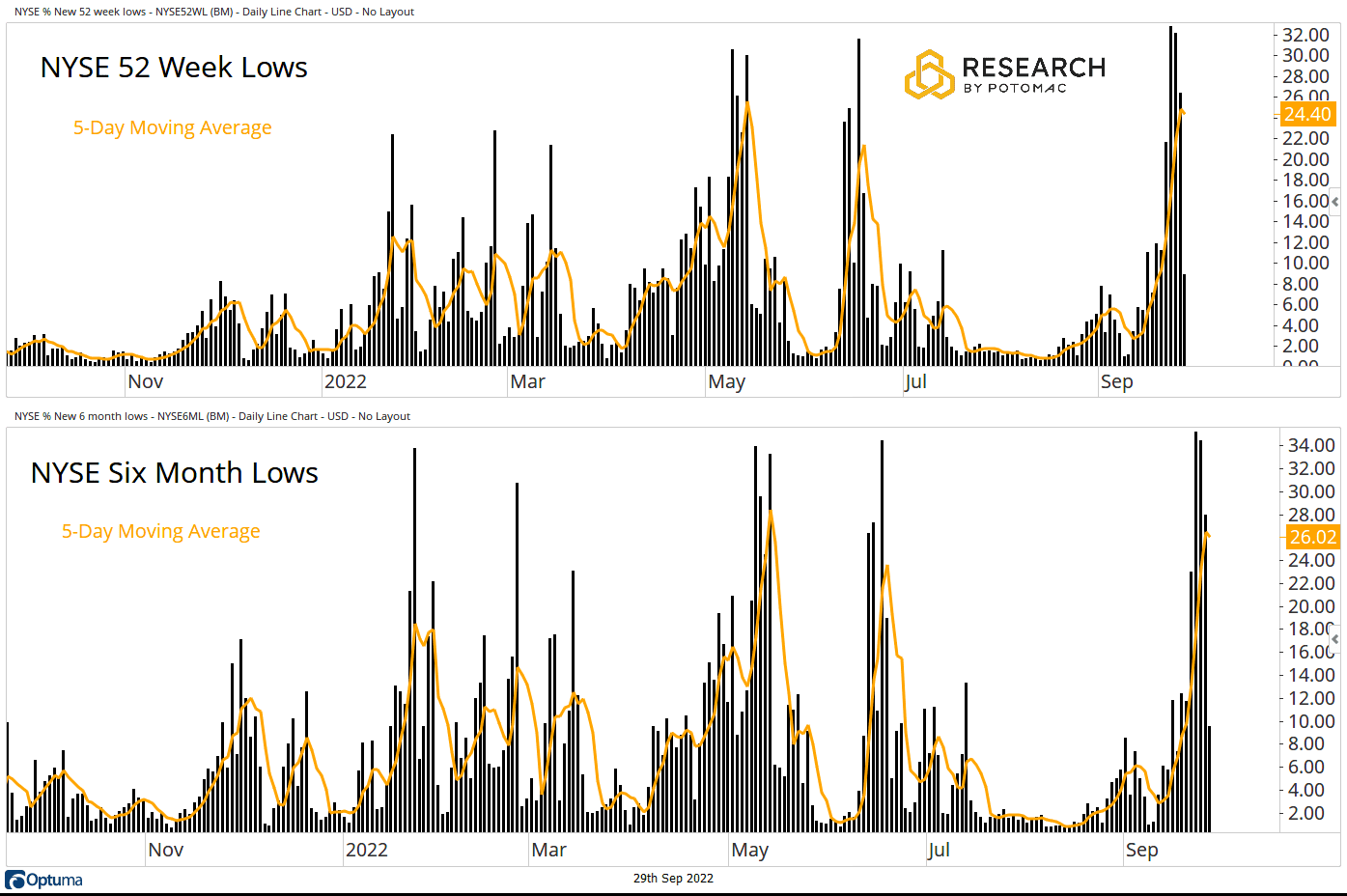
The five-day moving averages of stocks on the NYSE making new six-month and 52-week highs have moved lower again this week. Both metrics now stand at less than 1%.
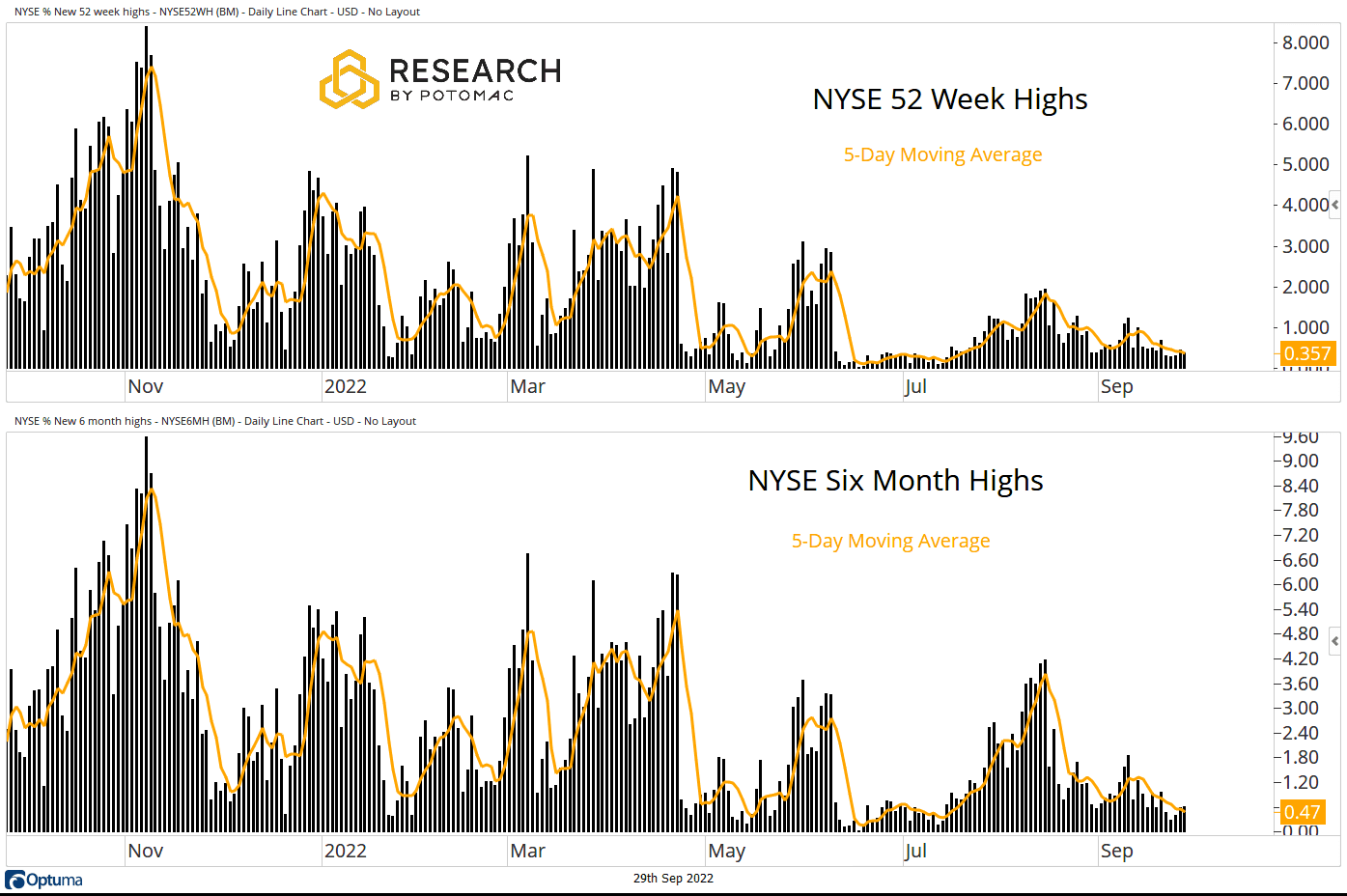
The percentage of NYSE issues trading above their respective 200-day moving averages moved to 13% this week, down from 17%. The S&P 500 remains below its 200-day moving average. The bears are still in control of the long-term trend as the index tries to hold support at the June lows.
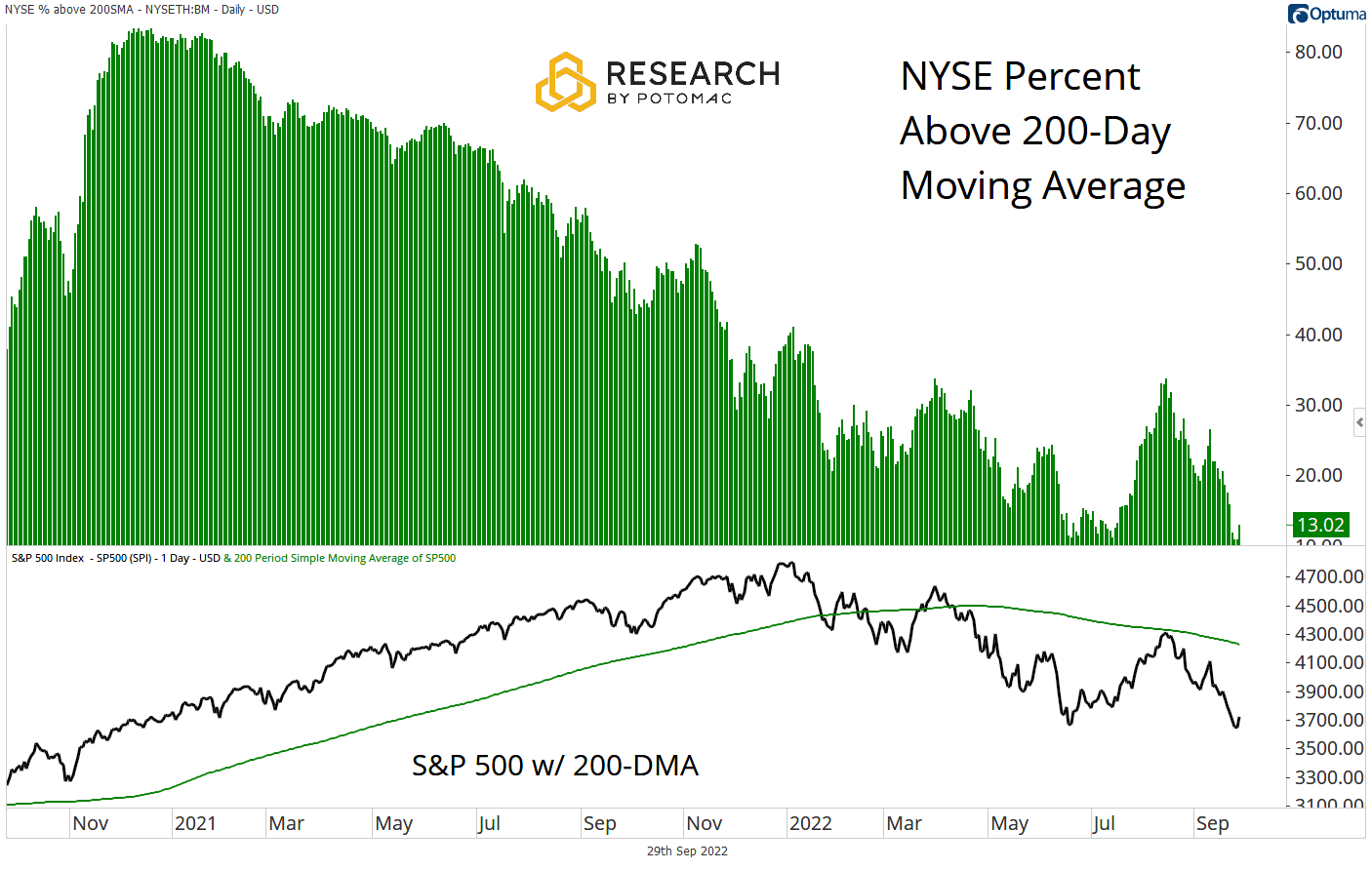
The percentage of NYSE issues trading above their respective 50-day moving averages moved to 13% from 19% last week. The S&P 500 is below its 50-day moving average.
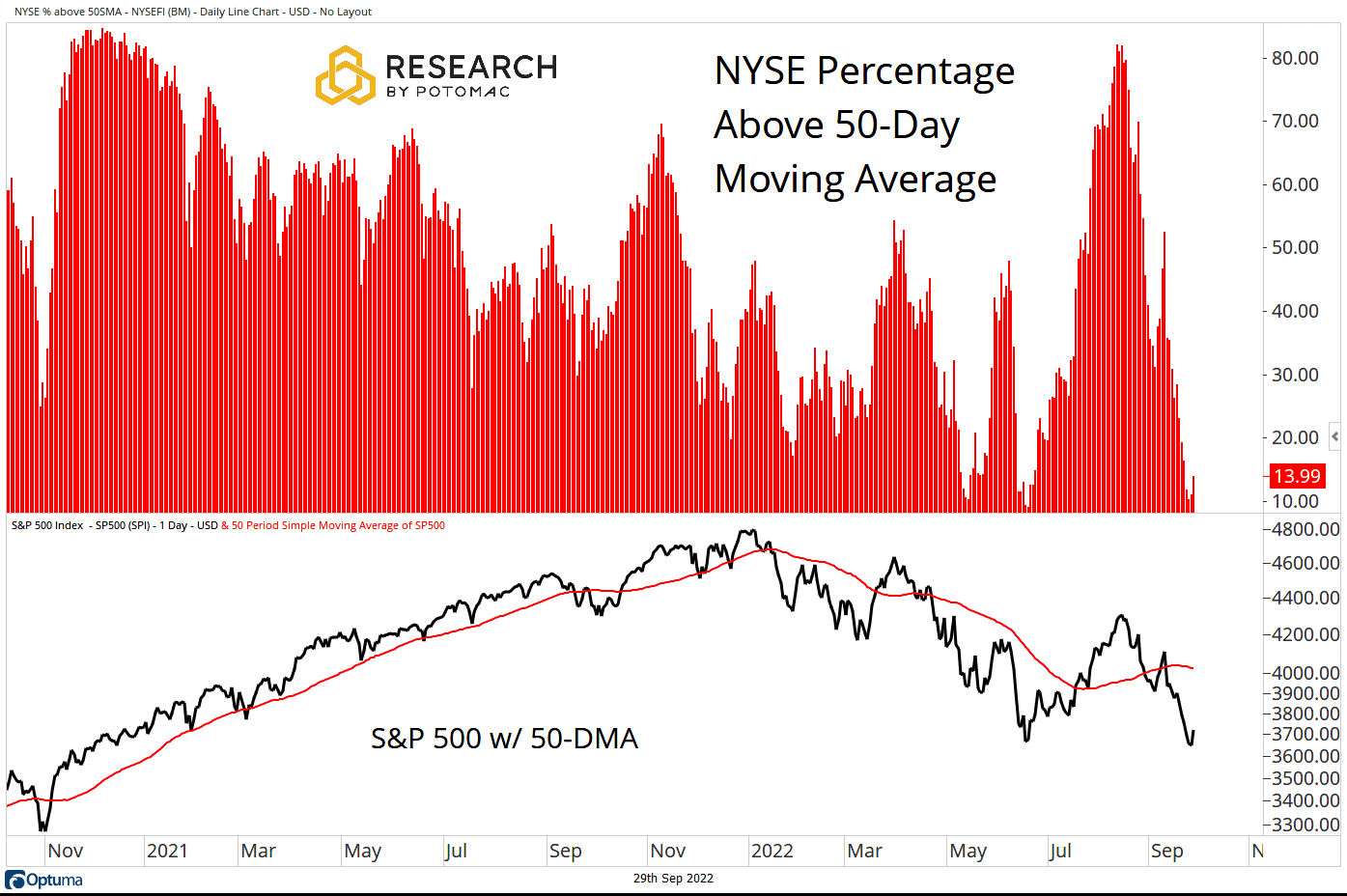
The percentage of issues on the NYSE trading above their respective 20-day moving averages stands at 14%, in line with last week’s reading. However, we note that this metric fell below 10% on Monday, like what was seen at the June low for the S&P 500. The index remains below its declining 20-day moving average.
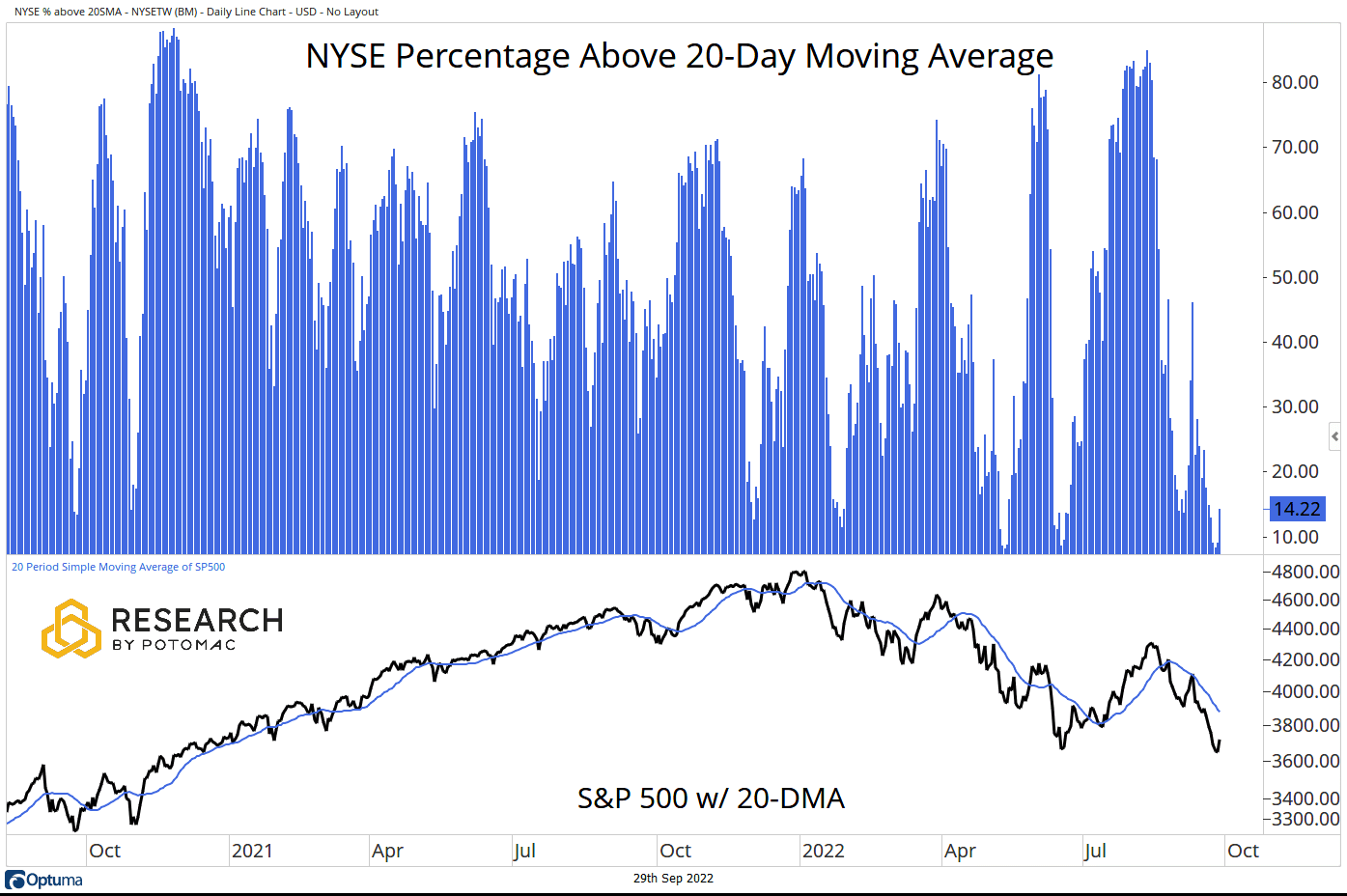
S&P 500 Breadth
Breadth metrics for the S&P 500 were mostly weaker on the week.
- Advance/Decline Line: Below the 50-day moving average, makes a new low for the cycle.
- Percent Above Their 200-Day Moving Average: 14% from 19% last week.
- Percent Above Their 50-Day Moving Average: 6% from 14% last week.
- Percent Above Their 20-Day Moving Average: 8% from 6% last week.
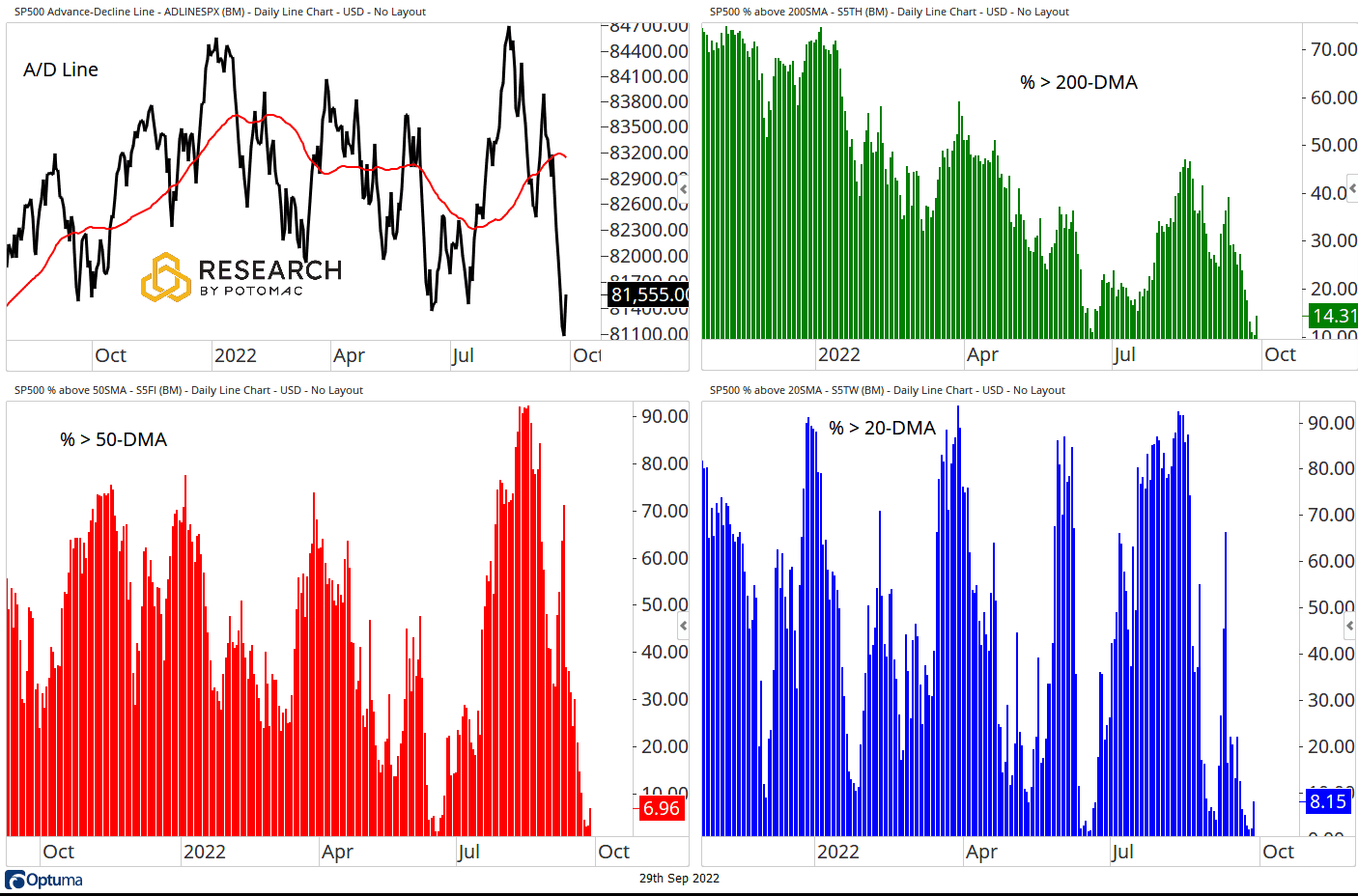
Small Cap Breadth
Breadth metrics for the S&P 600 Small Cap Index were weaker this week.
- Advance/Decline Line: Below the 50-day moving average, makes a new low for the cycle.
- Percent Above Their 200-Day Moving Average: 15% from 19% last week.
- Percent Above Their 50-Day Moving Average: 8% from 14% last week.
- Percent Above Their 20-Day Moving Average: 12% from 13% last week.
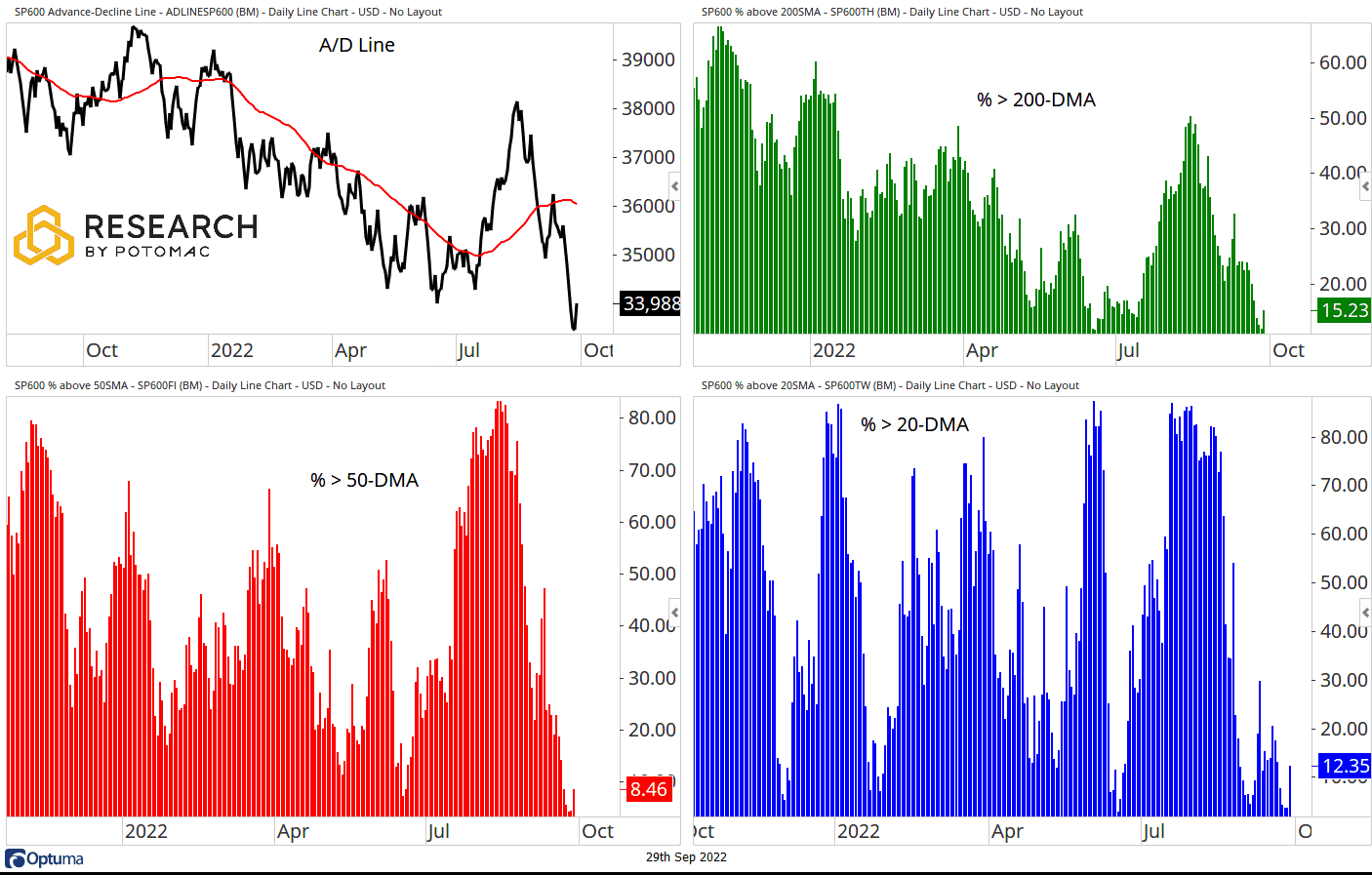
NASDAQ 100 Breadth
Breadth metrics for the NASDAQ 100 were mostly weaker this week.
- Advance/Decline Line: Below the 50-day moving average, testing the cycle lows.
- Percent Above Their 200-Day Moving Average: 9% from 10% last week.
- Percent Above Their 50-Day Moving Average: 9% from 11% last week.
- Percent Above Their 20-Day Moving Average: 7% from 6% last week.
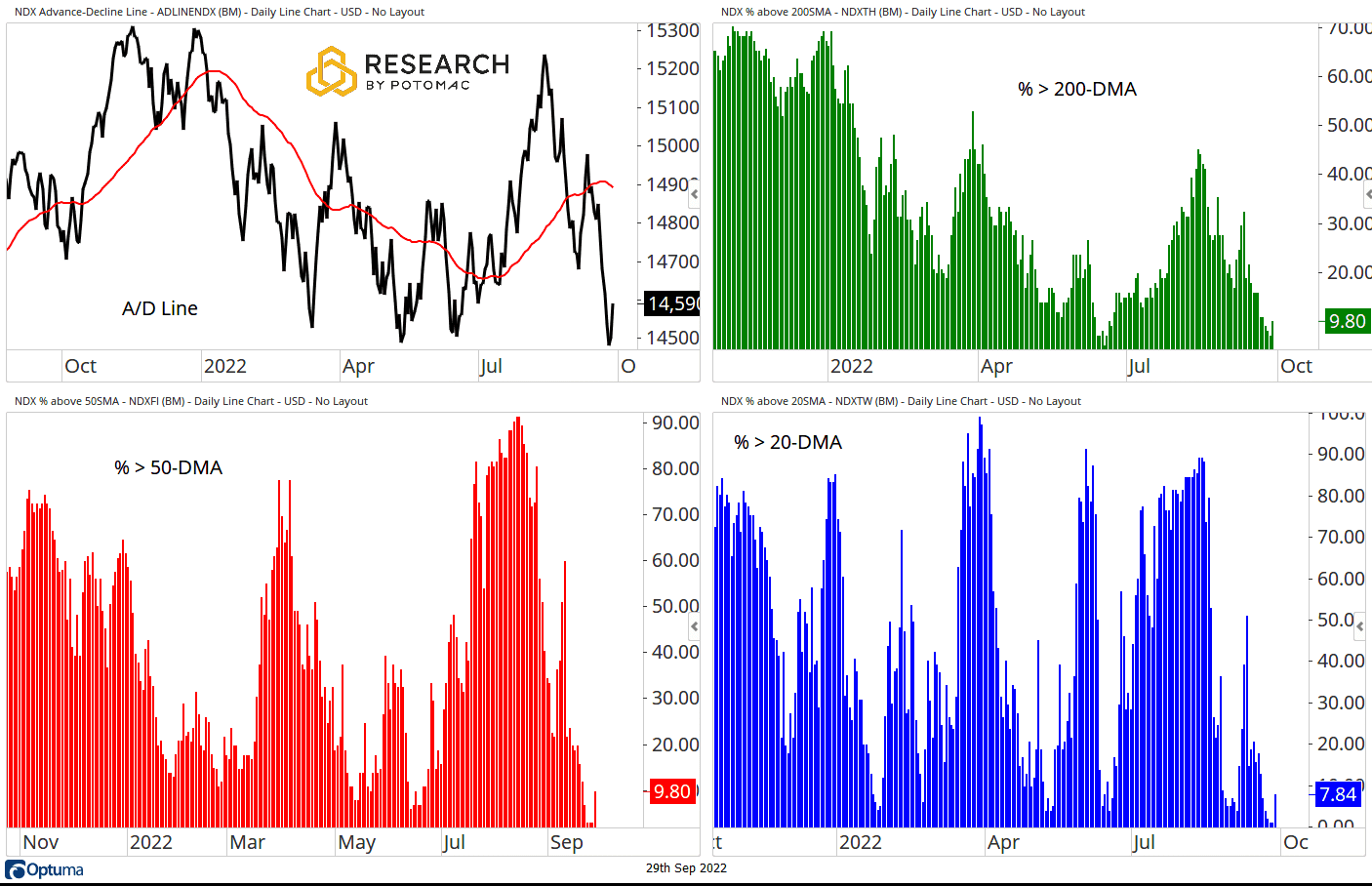
Potomac Fund Management ("Company") is an SEC-registered investment adviser. SEC registration does not constitute an endorsement of the advisory firm by the SEC nor does it indicate that the advisory firm has attained a particular level of skill or ability. This information is prepared for general information only and should not be considered as individual investment advice nor as a solicitation to buy or offer to sell any securities. This material does not constitute any representation as to the suitability or appropriateness of any investment advisory program or security. Please visit our FULL DISCLOSURE page. The company does not make any representations or warranties as to the accuracy, timeliness, suitability, completeness, or relevance of any information prepared by any unaffiliated third party, whether linked to the Company website or incorporated herein, and takes no responsibility for any of this information. The views of the Company are subject to change and the Company is under no obligation to notify you of any changes. Different types of investments involve varying degrees of risk, and there can be no assurance that the future performance of any specific investment or investment strategy will be profitable or equal to any historical performance level.
